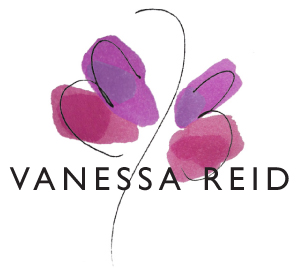Practicing Conscious Closure
/How do we know it is time to bring our work or our organization to completion? And how do we actually go about doing it? What does it mean to steward our organizations through their lifecycles, including the phase of dying, completion, release?
A sustainable system has an inherent ability to shed what is not needed and transform from one form to another in order to continue to evolve. Forests, animals, and even our own families do this seasonally and with every generation. But it seems this natural process is very difficult for organizations. Yet the skillfulness in discerning when it is time to let go - and the collective practice of doing it - is one of the most crucial learning opportunities for our own, and the social sector’s, vibrancy and evolution.
Too often endings mean “foreclosure”; they are done quickly, aggressively, without the celebration and acknowledgement of the work, and the people who have contributed. However, when we look at endings as essential to beginnings, dying as a natural phase of ongoing life, indeed as the transformative element for renewal, then we have many choices - and responsibilities - in how we move through such transitions and change.
“What Does it Mean to Be Sustainable?”
In December 2007, I was hired as executive publisher of ascent magazine & timeless books, an award- winning Canadian non-profit publication group based in Montreal, Toronto and BC. At a time of many changes in the publishing world, and the global economy, the Board was asking one question “what does it mean to be sustainable?” They were serious. It was not “how do we keep going?” or “what is our next growth strategy?” but what does it mean to truly evolve into our
greatest potential, relevance, service?
The answer we discerned collectively over the course of a year was that we had completed an important cycle of our life as a pioneering magazine of yoga, art, and engaged spirituality. ascent magazine is a 40-year old publication. For the last 10 years, it had been published out of Montreal by a group of creative young people, in the form of an international yoga magazine. We saw clearly that the external environment (funding and publishing trends) had an impact on our future. But more importantly, from our internal environment we sensed we had achieved the goals we had set out for ourselves in this form of expression - as a magazine. It was time to bring this decade of work to a close, and send the magazine back to its source place (the Yasodhara Ashram where it was founded) in order to "let come" the next stage of life from a place of deep reflection and learning.
In the phase of the life-cycle we were in, sustainability meant bringing our present form to an end. This was a scary realization, and what followed was a period of uncertainty and confusion. In this time, we began to learn how to hold and transform uncertainty.
ascent magazine already had in its organizational DNA two pre-conditions to enhance our ability to work with change, transition, and uncertainty. First, a mature culture of reflection, a skillfulness in the practice of looking inward individually and collectively. Second, an inherent appreciation of living systems and the value of impermanence. Soon we began to look at the work ahead as a kind of collective practice of conscious action. We called our process a “Conscious Closure.”
Right Questions Lead to Right Actions
We began by asking “how do we want to do this, how do we want to be in this, what do we want to create from this?” From this, we framed our Conscious Closure work in two ways 1) as an organization-wide project in which everyone is involved and essential and 2) as a collective learning process and unique opportunity to learn and practice a specific kind of work.
Critical to our success was a very clear mandate and detailed Plan which included our principles, goals and outcomes, a 3-month timeline with a specific end date and a revised budget approved by the Board. Within this, we made the decision to fundraise for and publish a final 10th anniversary issue of ascent magazine. This was a very important aspect to cultivating a collective sense of celebration, legacy and completion.
The priority was to work consciously and with great care, in line with the values and culture of our organization - a yoga magazine. As such, we explicitly worked with the values of wholeness and integration. Each individual, role and task, and the organization as a whole would be treated with dignity and integrity. For example, we made a commitment to have the resources to bring our operations to a close as a whole team, finishing the work together rather than "when your job is done, you can leave." This shifted from the focus on fulfilling "roles" to putting the "purpose of closure" in the centre, and as such, we could be adaptive and creative in how we responded as a team. We planned our timeline and our budget accordingly. Stated upfront, this created clarity, and generated enthusiasm and solidarity in our team.
Working with Uncertainty
The greatest challenge, and most important skill-set that we cultivated, was to navigate uncertainty in the stress of the completely new work of closure and our short timeline. We noticed that roles, tasks and structure were in constant flux depending on what was needed at that time. The boundaries would solidify only long enough to get the task at hand completed before they would shift again. We decided to create a “minimal-optimal” structure that could adapt to, and hold, the constant change and that combined our values with practices of integration and wholeness.
We experimented with forms and structures - for meeting, decision-making and accessing our collective intelligence by:
Forming a core transition team to hold the overall process and connect the parts; we created a Management Triad that brought emerging issues to the collective, as well as bringing forward processes to help us to see the big picture, move through and understand the uncertainty and rapid change we were experiencing weekly;
Holding frequent and intentional check-ins for reflection and connection, and to surface and include multiple voices in sensing "what is real?"; this allowed us to quickly see where work was changing and to identify who and how we could address these "new emergences" (rather than waiting until the next staff meeting). it also helped us work with the different emotions and stresses that came up with a whole team "working its way out of a job";
Paying attention to our inner landscape (emotions, mindsets, feelings, competencies, blockages) as important data for the whole system in order to align our outer inner realities with our outer actions and decision-making;
Using a variety of practices that accessed more than just our rational minds, such as conversation, meditation, reflection, cooking and eating together and different forms of body awareness including yoga. the idea was to create diverse environments in order to access different perspectives and intelligence which could then enhance group cohesion and mutual support.
Creating a legacy and an opportunity to celebrate; the final issue of the magazine offered all of us, including our Board, a sense of completion to the 10 years that ascent was a print publication. it was a celebratory issue in it content (featuring many of the magazine's favourite authors) and which we launched in our yoga studio to the delight of our local (and national) community. it offered them the opportunity to share their gratitude and their sadness, and to also have a sense of completion.
The Big Learning
This experience taught us how important it is to make conscious the need to foresee and steward endings in organizations. Endings are the compost for new beginnings, new visions and paradigms - and certainly the compost for new life. We cannot pour more water in an already full cup, so clearing the space to bring in the new is essential.
We learned the importance of, and created a personal and an organizational practice around, cultivating the patience and ability to hold the paradoxes of celebration and grieving, of doing good work together and doing our final work together. We were simultaneously letting something go AND in the creative process of producing a legacy (in the form of the 10th Anniversary issue of ascent magazine). Holding these paradoxes and these seemingly divergent emotions was a core capacity we cultivated - and if our organizations are truly "organismes", then we need to FEEL them, rather than simply strategize around them.
Here are some other key learnings about being in this phase of organizational closure:
Listening to what the work is asking rather imposing on it what we want or expect
Naming and framing and ending can catalyse an immense amount of energy, dynamism
and focus. It can literally give new life.Shifting the attention of leadership towards the practices of “collective stewardship”: the
inspiration to lead in different ways, develop skills and open up ways of thinking in order
to steward transitions and endings.The importance of understanding how systems learn; creating conditions and skills in
organizations to work with and not to resist or hide from the natural processes of
lifecycles.
And lastly, being courageous. By stepping into this newness together, by being at each other's backs and by creating a beautiful legacy with both the magazine and with our friendships, we discovered a resilience and resourcefulness in us - both in terms of the skills and the contributions we could make to the work and to each other. We found ourselves also hosting, to a certain degree our own personal conscious closures and supported each other in creating space to prepare for life transitions that leaving a job inevitably engenders. This was a form of legacy that we were very proud of, and which I hope was felt in the final issue of the magazine, themed "Union", which was a result of this "collective yoga" practice we called Conscious Closure.
*A shorter version of this piece was originally written in 2008 for Tamarack Institute.
*For the longer article called "Conscious Closure: stewarding organizations through the cycles of life", please contact me!
*To see the final editorial of ascent magazine (issue 41, 2008) in which I write about conscious closure, go here.


